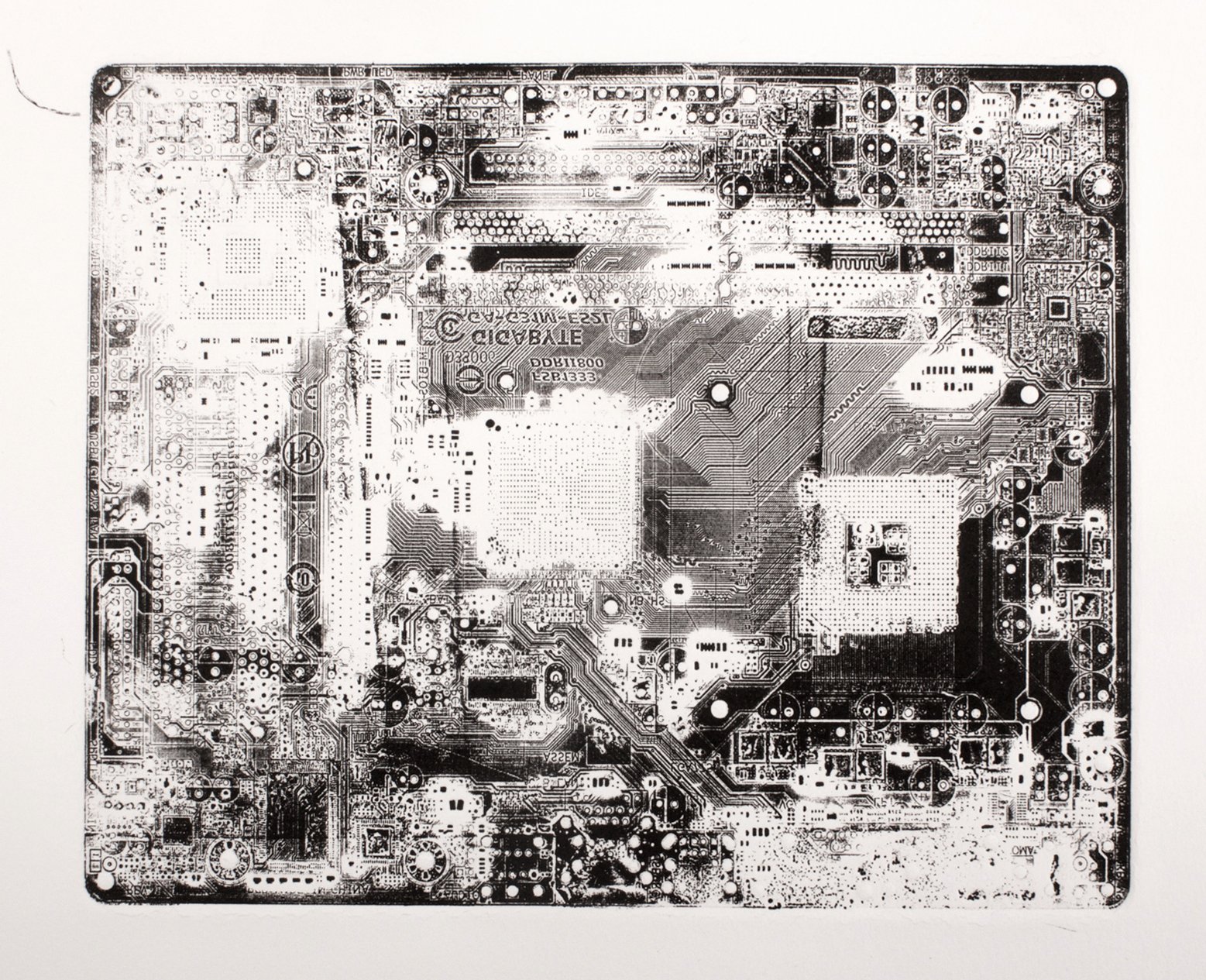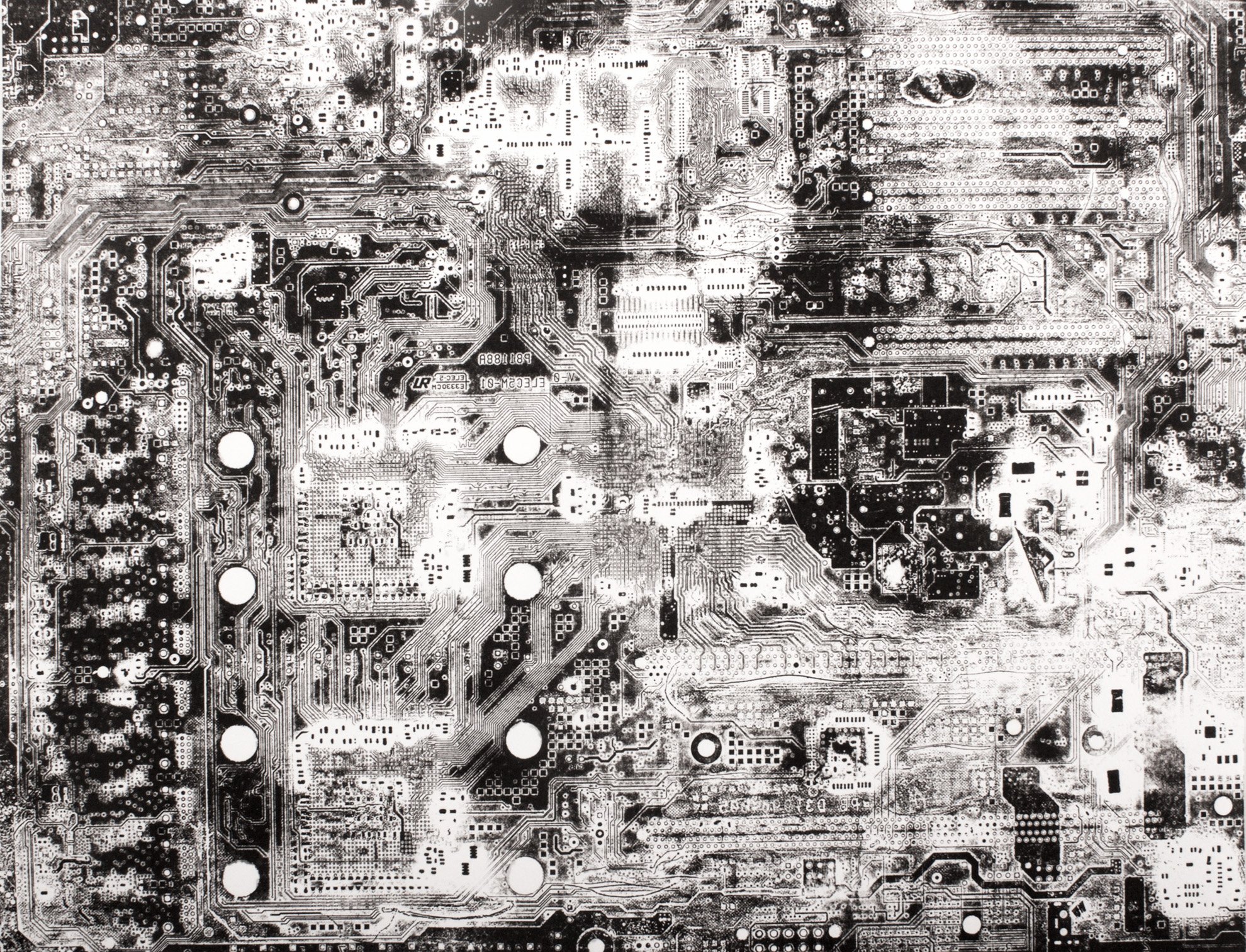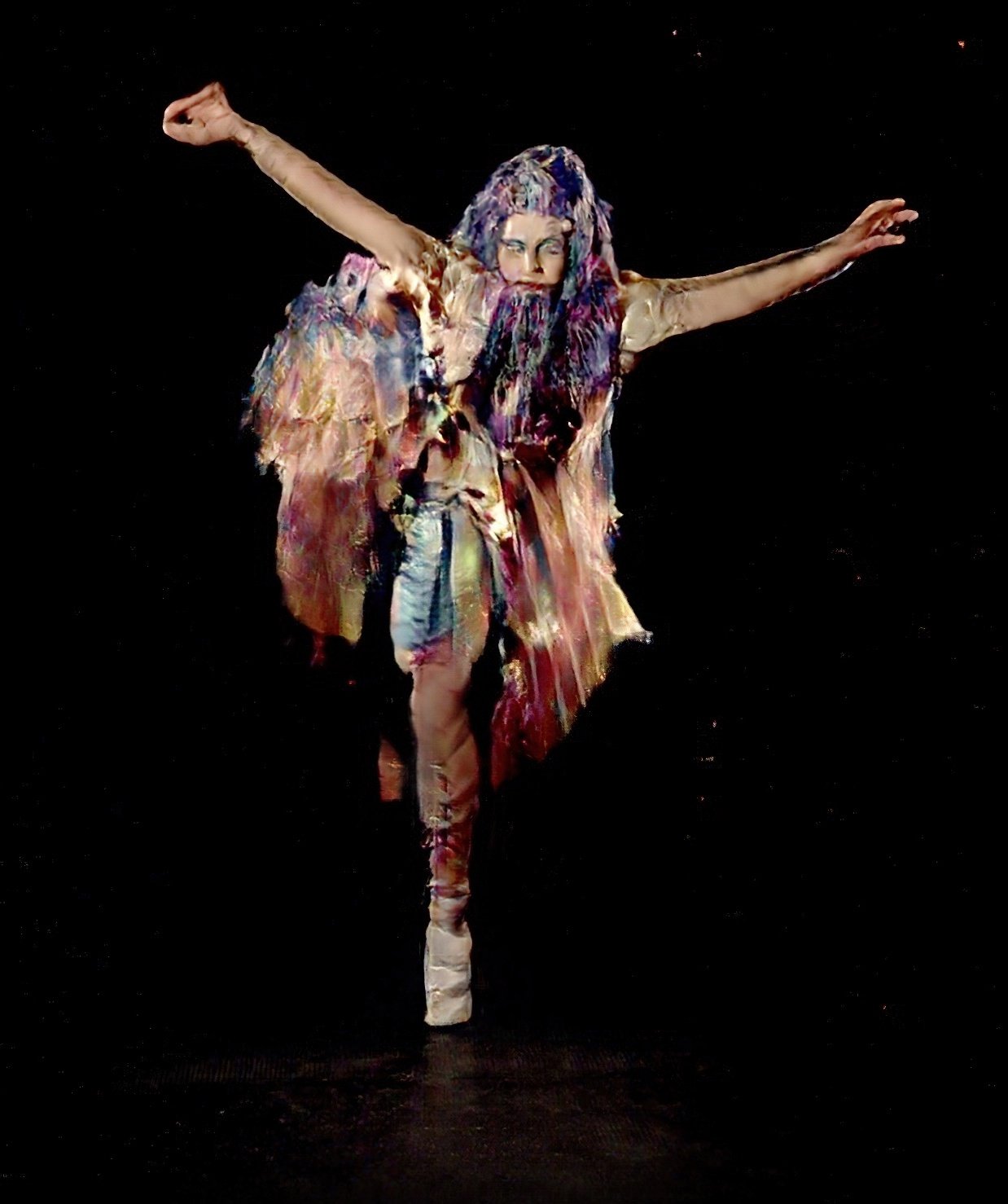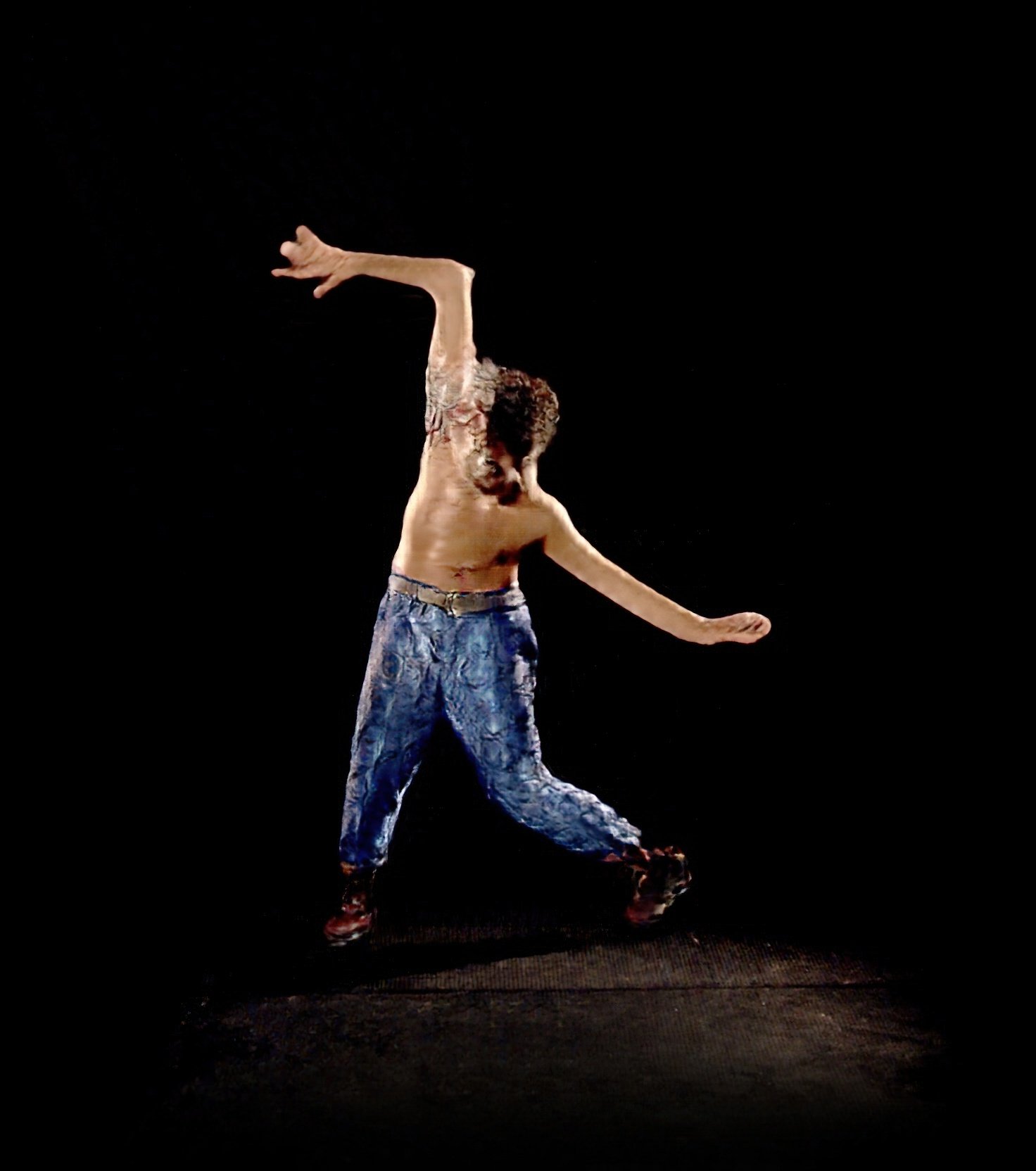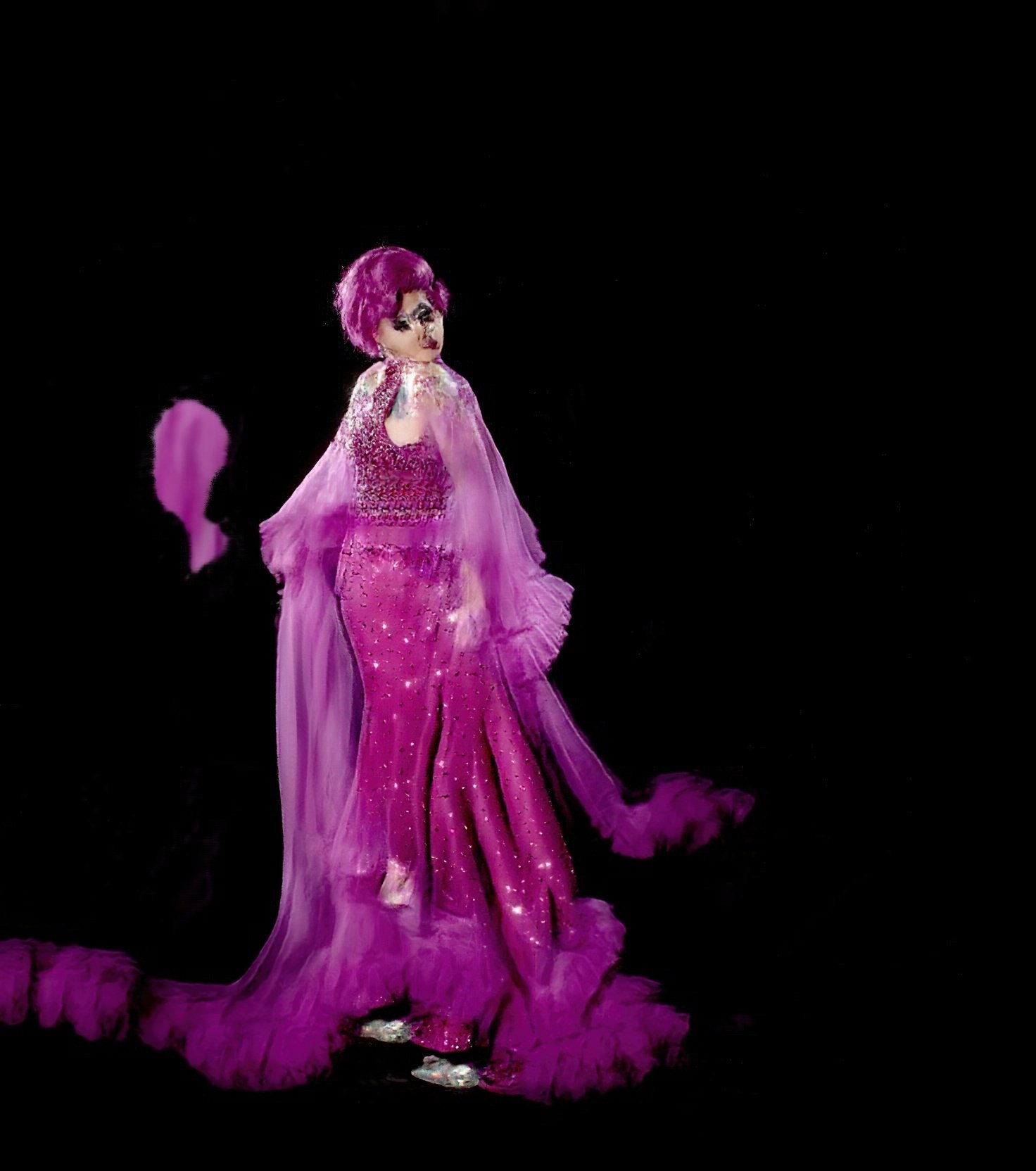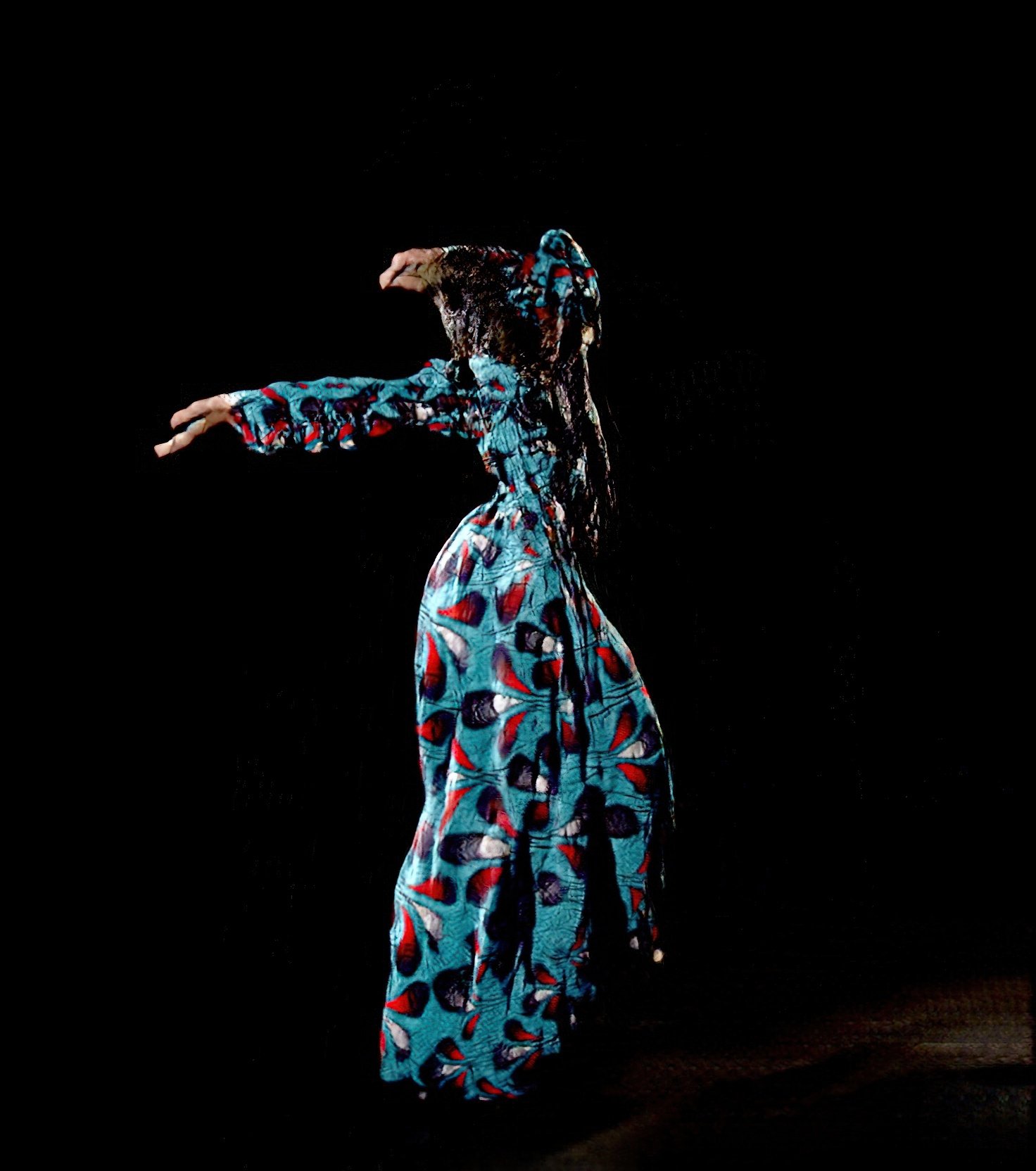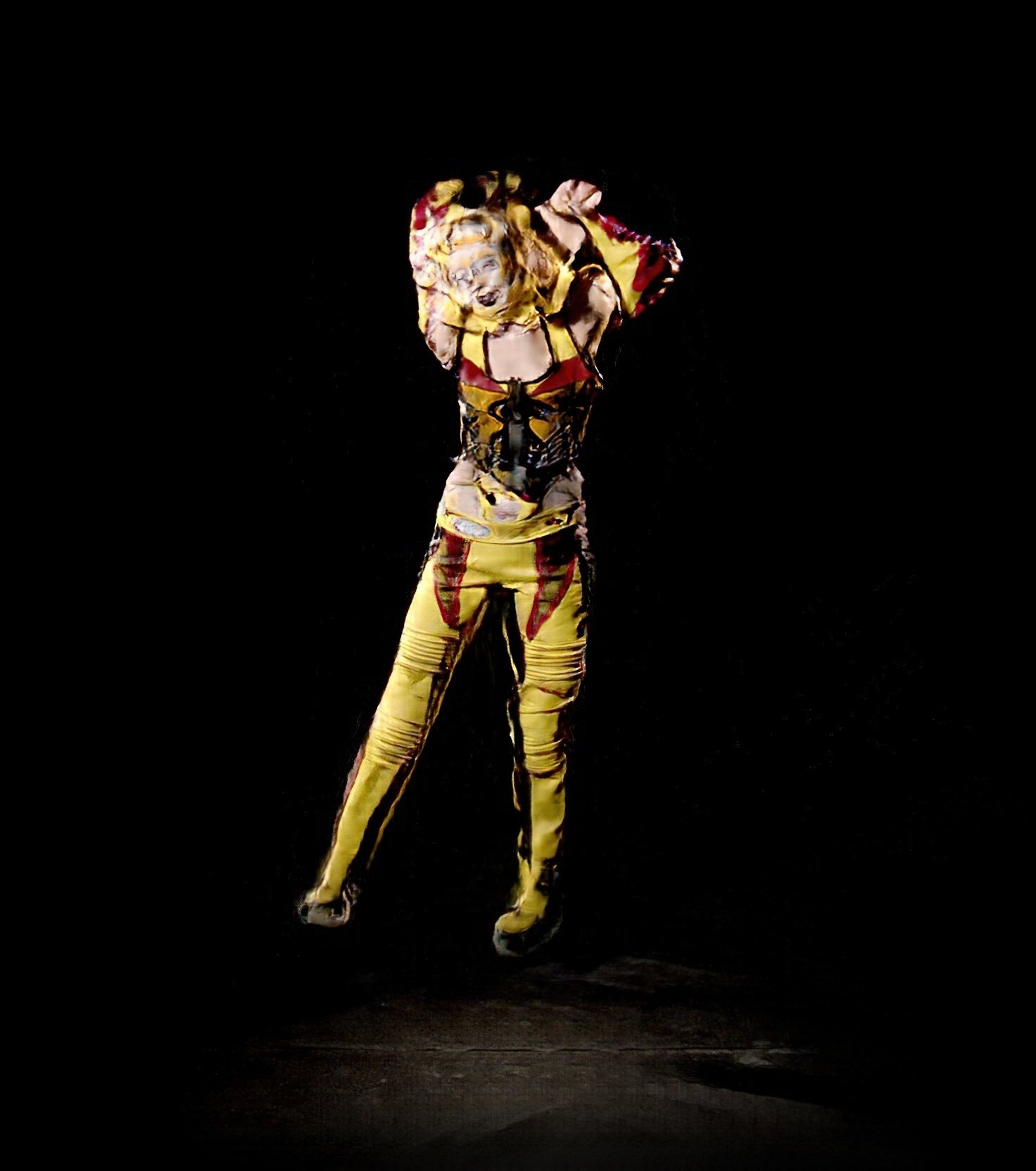Jake Elwes: Data • Glitch • Utopia @ Gazelli Art House
Simply put, Gazelli Art House’s mini-retrospective of Jake Elwes’ career is a triumph in the potential of AI art.
For the occasion, Gazelli Art House completely transformed its space on Dover Street into a dark, mesmerising space that completely strips away any reminiscence of traditional gallery characteristics. Its entrance windows, however, are not just covered in blackout materials but rather are decorated in exciting renditions of Elwes’ piece, offering a taste of what is to come inside.
Exterior shot. Gazelli Art House. Courtesy Gazelli Art House.
On the ground floor, visitors are greeted by several video works created in the media artist’s early years, such as alongside more recent creations. Of these works, two particularly stood out.
Cusp (2019) reinvigorates the artist’s familiar childhood environment of the Essex marshes with AI and sculptural twists that confuse the mind. Within the videos of the tidal landscapes, which rotate on a loop, randomly generated images of birds are embedded on top. Whilst they appear similar to the average marsh bird, they are, in fact, an AI-generated amalgamation of embedded qualities of all the different species that have been fused together to create wholly realistic yet utterly fictitious new species. Even the accompanying soundscape is imagined from artificially generated birdsong.
Still from CUSP, 2019. 4K digital video & audio 13 min loop. Ed. 3/5 + 2AP. Courtesy of the artist & Gazelli Art House.
Further disrupting the natural ecology, the screen is set within a three-dimensional recreation of the mudflats of Landmere Creek. The desire to recreate reality is so strong that the structure even contains pools of water that appear even more lifelike in the gallery’s darkness. And if one is not looking carefully, they may well end up with wet feet.
Dada Da Ta, 2016. Digital video with audio 20 min loop. Ed. 3/5 + 2AP. Courtesy of the artist & Gazelli Art House.
Taking a more humorous approach to digital art is Dada Da Ta (2016). Using accompanying headphones, viewers are transported into a discombobulating soundscape of masculine projected authority. It comprises snippets from over fifty hours of interviews conducted by news anchors and leading figures in the global tech industry, including Elon Musk, Bill Gates and Reid Hoffmann.
But, in typical Elwes fashion, these have a twist. The interviews as individual, standalone conversations are totally normal, nothing out of the ordinary. But, when each is cut to identify every instance where these entrepreneurs spoke using numbers and then joined together to create a whole artwork that uses only numerical language, it is totally ludicrous. The added element of these enormous figures having been transcribed on the screen using the IBM Watson AI speech-to-text programme makes it appear even more amusing. To an ordinary person, this would be akin to being called out every time one used the vocal disfluencies ‘like’ and ‘um’ - entirely embarrassing for the subject and utterly hilarious for those watching.
Several works upstairs take a more overt approach to this humour. A personal favourite is A.I Interprets A.I Interpreting ‘Against Interpretation’ (Sontag 1966) (2023). Here, the development in Elwes’ practice is clear; Elwes’ earlier image-to-text-to-image works, Close Loop, created in 2017 whilst they were completing their studies at The Slade School from Fine Art, UCL, which can be seen by the gallery entrance seems to be this works’ precedent.
Still from A.I. Interprets A.I. Interpreting ‘Against Interpretation’ (Sontag 1966), 2023. 3 channel video with sound. 25 min loop. Ed. of 3 + 2AP. Courtesy of the artist & Gazelli Art House.
As its title suggests, Elwes has used Susan Songtang’s iconic essay, ‘Against Interpretation’, published in 1966, as a springboard for their AI experiments. Within this essay, Sontag criticises the art critic for over-interpreting works of art rather than experiencing their form and subject at the moment. [2]
A.I. Interprets A.I. Interpreting ‘Against Interpretation’ (Sontag 1966), 2023. 3 channel video with sound. 25 min loop. Ed. of 3 + 2AP. Courtesy of the artist & Gazelli Art House.
The loop contains three distinct parts: Songtang’s essay appears in shortened, chronological phrases on a screen; AI technology creates unique and distorted images from her commentary; these picture prompts are then transformed back into words resulting in an unrelated yet oddly plausible critical narrative. For example, Sontag’s line, “... it must have been a revolutionary and creative move to interpret works of art.” becomes a dystopic scene of a semi-clothes man reclining on a sofa that is camouflaged with a background surrounded by what looks to be works of art. AI reads the images as “What does Michaelangelo do when he doesn’t want to paint?”. Completely genius. And the question is, what does he do? These phrases displayed on the LDC screen are then simultaneously whispered as they appear, only adding to the oxymoronic plausible impossibility.
Aside from the comedic geniuses of the AI model, the mimetic commentary about how the exact topic which Sontag writes about has happened to her work as readers squeeze the juice out of her essay and dissect every phrase and every word is equally poignant.
Installation shot. Featuring works from the series Digital Caress (2015) and Solid State (2015). Courtesy Gazelli Art House.
The series of prints entitled Solid State (2015) adds a more traditional twist to the show. Of the fifteen total prints, eight are on display here. What is especially exciting about many of Elwes’ video works is that they often return to traditional art history or theory, as demonstrated in marrying Sontag’s seminal essay and image-generating diffusion models and image labelling algorithms in A.I Interprets A.I Interpreting ‘Against Interpretation’ (Sontag 1966).
In this instance, traditional artistic material supersedes technology; circuit boards that have been burned are used as a stamp run through a printing press. Upon first glance, the unconventional use of this object is not entirely obvious - is it an aerial view of a cityscape? Was it created by carvings on a lino board? But nothing one might immediately assume could have produced such intricate, abstract patterns as this.
As one begins to head back downstairs, a single work from their Zizi - Queering the Dataset (2019) sits like a shrine to drag and AI at the top of the stairs. From this, one might be prompted to either revisit or engage with Zizi in Motion: A Deepfake Drag Uptopia (2023) tucked away at the back of the ground floor for the first time.
Installation image. Featuring a still from Zizi in Motion: A Deepfake Drag Utopia (movement by Wet Mess) - Wet Mess, Tete Bang, Sister Sister, Ruby, Oedipussi Rex,
Miss Terri Boxx, Me The Drag Queen, Mark Anthony, Mahatma Khandi, Luke Slyka, Lilly SnatchDragon, Lavinia Co-op, HERR, Dakota Schiffer, Dahc Dermur VIII, Chiyo, Charlie Wood, Cara Melle, Bourgeoisie, Bolly-Illusion, Baby Lame , 2023. Single channel video projection no sound 217 min loop. Ed. 1/1 +2AP EACH. Courtesy of the artist & Gazelli Art House.
Featuring a kaleidoscopic cast of drag queen stars such as Oedipussi Rex, Lily SnatchDragon and Wet Mess, this continuous video questions the use of deepfake technology and asks how it might be used in an ethical and consensual way to celebrate queer bodies and the queer community at large. Without any accompanying sound to occupy the mind, striking visuals created by elegant improvised dance moves are even more dynamic. Consequently, the body and its unique ability to communicate emotions and stories - even when broken down by AI technology - become the primary focus.
Individual stills from Zizi in Motion: A Deepfake Drag Utopia (movement by Wet Mess) - Wet Mess, Tete Bang, Sister Sister, Ruby, Oedipussi Rex,
Miss Terri Boxx, Me The Drag Queen, Mark Anthony, Mahatma Khandi, Luke Slyka, Lilly SnatchDragon, Lavinia Co-op, HERR, Dakota Schiffer, Dahc Dermur VIII, Chiyo, Charlie Wood, Cara Melle, Bourgeoisie, Bolly-Illusion, Baby Lame , 2023. Single channel video projection no sound 217 min loop. Ed. 1/1 +2AP EACH. Courtesy of the artist & Gazelli Art House.
It is clear that through this ongoing project, and indeed across their entire oeuvre, Elwes wishes to celebrate humanity in an age of technology.
Jake Elwes: Data • Glitch • Utopia is on view at Gazelli Art House until 15 July, 2023.
For more AI drag extravaganza, head to the Victoria & Albert Museum, London, to view Jake Elwes’ installation, The Zizi Show, on display until April 24, 2024.
Ilaria Bevan
Editor in Chief, MADE IN BED







